Brian Wilson: Smile
 The Brian Wilson album Smile, based on songs and concepts from an unfinished Beach Boys album, is released.
The Brian Wilson album Smile, based on songs and concepts from an unfinished Beach Boys album, is released.
 The Brian Wilson album Smile, based on songs and concepts from an unfinished Beach Boys album, is released.
The Brian Wilson album Smile, based on songs and concepts from an unfinished Beach Boys album, is released.
 The soundtrack of the 1967 movie OK Connery is released, with music by Ennio Morricone. The movie is better known to fans of Mystery Science Theater 3000 as Operation Double 007.
The soundtrack of the 1967 movie OK Connery is released, with music by Ennio Morricone. The movie is better known to fans of Mystery Science Theater 3000 as Operation Double 007.
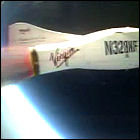 The first qualifying flight for the Ansari X Prize becomes a dangerous one for pilot Mike Melvill, as the experimental spacecraft SpaceShip One begins a rapid roll after its rocket engine ignites, sending the vehicle on a twisty trajectory into suborbital space. The vehicle reaches just under Mach 3, and still passes the altitude of 100 kilometers necessary to be considered a space flight (and to be considered a contender for the X Prize), but SpaceShip One must repeat the feat to win the $10,000,000 prize for launching the first privately funded spacecraft.
The first qualifying flight for the Ansari X Prize becomes a dangerous one for pilot Mike Melvill, as the experimental spacecraft SpaceShip One begins a rapid roll after its rocket engine ignites, sending the vehicle on a twisty trajectory into suborbital space. The vehicle reaches just under Mach 3, and still passes the altitude of 100 kilometers necessary to be considered a space flight (and to be considered a contender for the X Prize), but SpaceShip One must repeat the feat to win the $10,000,000 prize for launching the first privately funded spacecraft.
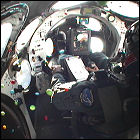 Privately-owned experimental space vehicle SpaceShip One makes its second qualifying flight into suborbital space, exceeding Mach 3 (the first privately owned vehicle to do so) and reaching an altitude of 112 kilometers. Brian Binnie pilots SpaceShip One for its third trip into space and earns the second set of FAA commercial astronaut wings as a result. A fourth trip is considered, but then cancelled to avoid any damage to the history-making vehicle. By this point, Virgin has already hired SpaceShip One designer Burt Rutan to build SpaceShip Two, a suborbtial passenger spacecraft which will take paying customers into space as part of the company’s “Virgin Galactic” service, based on the design of SpaceShip One. Rutan and investor (and Microsoft co-founder) Paul Allen also claim the $10,000,000 Ansari X Prize.
Privately-owned experimental space vehicle SpaceShip One makes its second qualifying flight into suborbital space, exceeding Mach 3 (the first privately owned vehicle to do so) and reaching an altitude of 112 kilometers. Brian Binnie pilots SpaceShip One for its third trip into space and earns the second set of FAA commercial astronaut wings as a result. A fourth trip is considered, but then cancelled to avoid any damage to the history-making vehicle. By this point, Virgin has already hired SpaceShip One designer Burt Rutan to build SpaceShip Two, a suborbtial passenger spacecraft which will take paying customers into space as part of the company’s “Virgin Galactic” service, based on the design of SpaceShip One. Rutan and investor (and Microsoft co-founder) Paul Allen also claim the $10,000,000 Ansari X Prize.
 The 15th episode of the radio science fiction comedy series The Hitchhiker’s Guide To The Galaxy is broadcast on BBC Radio, continuing Dirk Maggs’ adaptation of Douglas Adams’ novel Life, The Universe, And Everything with most of the original radio cast. An archival audiobook recording of the late Douglas Adams allows the Hitchhiker’s Guide creator to play the part of Agrajag.
The 15th episode of the radio science fiction comedy series The Hitchhiker’s Guide To The Galaxy is broadcast on BBC Radio, continuing Dirk Maggs’ adaptation of Douglas Adams’ novel Life, The Universe, And Everything with most of the original radio cast. An archival audiobook recording of the late Douglas Adams allows the Hitchhiker’s Guide creator to play the part of Agrajag.
More about The Hitchhiker’s Guide To The Galaxy in the LogBook
 The R.E.M. album Around the Sun is released, featuring the single “Leaving New York”.
The R.E.M. album Around the Sun is released, featuring the single “Leaving New York”.
 The William Shatner CD Has Been is released, featuring guest appearances by Brad Paisley, Henry Rollins and Ben Folds.
The William Shatner CD Has Been is released, featuring guest appearances by Brad Paisley, Henry Rollins and Ben Folds.
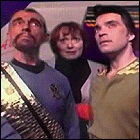 The internet-based fan film Star Trek: Phase II releases its second full-length episode, In Harm’s Way. William Windom, Malachi Throne and BarBara Luna guest star.
The internet-based fan film Star Trek: Phase II releases its second full-length episode, In Harm’s Way. William Windom, Malachi Throne and BarBara Luna guest star.
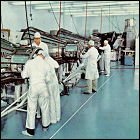 Dr. Maxime “Max” Faget, one of NASA’s original employees dating back to the Space Task Group, dies at the age of 83. In 1946, he joined Langley Research Center where he contributed to pilotless aircraft research and became head of the center’s performance aerodynamics division. In 1958, he designed the original Mercury space capsule as a member of NASA’s Space Task Group, charged with finding ways to help America lead in the cold-war-era space race. He was one of the chief architects of the basic mission design for the Apollo lunar program. He was responsible for designing or contributing to the design of every U.S. manned spacecraft from Mercury through the shuttle, and retired from NASA in 1981 following the second flight of the shuttle Columbia. In 1982, he was a founding member of Space Industries, a company which designed experiments which were flown aboard the shuttle. He held patents on the Mercury capsule itself, as well as the vehicle’s escape tower and “survival couch.” He is survived by four children and their families.
Dr. Maxime “Max” Faget, one of NASA’s original employees dating back to the Space Task Group, dies at the age of 83. In 1946, he joined Langley Research Center where he contributed to pilotless aircraft research and became head of the center’s performance aerodynamics division. In 1958, he designed the original Mercury space capsule as a member of NASA’s Space Task Group, charged with finding ways to help America lead in the cold-war-era space race. He was one of the chief architects of the basic mission design for the Apollo lunar program. He was responsible for designing or contributing to the design of every U.S. manned spacecraft from Mercury through the shuttle, and retired from NASA in 1981 following the second flight of the shuttle Columbia. In 1982, he was a founding member of Space Industries, a company which designed experiments which were flown aboard the shuttle. He held patents on the Mercury capsule itself, as well as the vehicle’s escape tower and “survival couch.” He is survived by four children and their families.
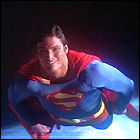 The man who went from an unknown actor to man of steel to activist, Christopher Reeve dies at the age of 52 after falling into a coma a day earlier. He was best known to most as the star of 1978’s Superman and its three sequels, but he also distinguished himself with roles in other films such as Somewhere In Time. He was picky with his roles, turning down the lead parts in such films as The Running Man, Total Recall and American Gigolo. In 1995, he was paralyzed from the neck down after being thrown from a horse, and he took on a new role of a tireless campaigner for spinal injury research (and, more recently, stem cell research). He had recently been seen in the recurring role of the mysterious Dr. Swann in the TV series Smallville.
The man who went from an unknown actor to man of steel to activist, Christopher Reeve dies at the age of 52 after falling into a coma a day earlier. He was best known to most as the star of 1978’s Superman and its three sequels, but he also distinguished himself with roles in other films such as Somewhere In Time. He was picky with his roles, turning down the lead parts in such films as The Running Man, Total Recall and American Gigolo. In 1995, he was paralyzed from the neck down after being thrown from a horse, and he took on a new role of a tireless campaigner for spinal injury research (and, more recently, stem cell research). He had recently been seen in the recurring role of the mysterious Dr. Swann in the TV series Smallville.
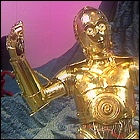
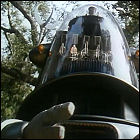 Carnie Mellon University inducts five new members to its Robot Hall Of Fame at a press event promoting the movie adaptation of Isaac Asimov’s I, Robot. The 2004 inductees, again split almost evenly between fictional and real robots, are:
Carnie Mellon University inducts five new members to its Robot Hall Of Fame at a press event promoting the movie adaptation of Isaac Asimov’s I, Robot. The 2004 inductees, again split almost evenly between fictional and real robots, are:
Judges for the 2004 Hall include SimCity creator Wil Wright, roboticist Ruzena Bajcsy and Apple co-founder Steve Wozniak.
 The 16th episode of the radio science fiction comedy series The Hitchhiker’s Guide To The Galaxy is broadcast on BBC Radio, continuing Dirk Maggs’ adaptation of Douglas Adams’ novel Life, The Universe, And Everything with most of the original radio cast. An archival audiobook recording of the late Douglas Adams allows the Hitchhiker’s Guide creator to play the part of Agrajag; Joanna Lumley (Sapphire & Steel, Absolutely Fabulous) also guest stars.
The 16th episode of the radio science fiction comedy series The Hitchhiker’s Guide To The Galaxy is broadcast on BBC Radio, continuing Dirk Maggs’ adaptation of Douglas Adams’ novel Life, The Universe, And Everything with most of the original radio cast. An archival audiobook recording of the late Douglas Adams allows the Hitchhiker’s Guide creator to play the part of Agrajag; Joanna Lumley (Sapphire & Steel, Absolutely Fabulous) also guest stars.
More about The Hitchhiker’s Guide To The Galaxy in the LogBook
 The Duran Duran CD Astronaut is released.
The Duran Duran CD Astronaut is released.
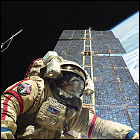 The tenth full-time crew of the International Space Station lifts off from Russia’s Baikonur Cosmodrome aboard Soyuz TMA-5. Salizhan Sharipov and Leroy Chiao take up residence on the ISS for 192 days. Arriving with them on the ISS for a nine-day stay is cosmonaut Yuri Shargin, who returns to Earth aboard Soyuz TMA-4 with the Expedition 9 crew.
The tenth full-time crew of the International Space Station lifts off from Russia’s Baikonur Cosmodrome aboard Soyuz TMA-5. Salizhan Sharipov and Leroy Chiao take up residence on the ISS for 192 days. Arriving with them on the ISS for a nine-day stay is cosmonaut Yuri Shargin, who returns to Earth aboard Soyuz TMA-4 with the Expedition 9 crew.
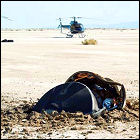 A week after the Genesis sample return mission tumbled back to Earth, slamming into the Utah desert floor at nearly 200 miles per hour after its parachutes failed to open, investigators find a likely cause of the crash. It appears that four gravity-sensitive switches, designed to sense the sudden deceleration of the Genesis capsule through Earth’s atmosphere and set off a timed sequence that would’ve opened the parachutes, had all been installed backwards. The four switches were designed to be redundant, so that if some failed the others could still carry out their assigned task…but this doesn’t do a lot of good if all of them are all installed incorrrectly. The investigation indicates that an erroneous schematic diagram of Genesis may be to blame. In the meantime, researchers begin to examine the surviving chunks of the broken collector plates containing particles of solar material.
A week after the Genesis sample return mission tumbled back to Earth, slamming into the Utah desert floor at nearly 200 miles per hour after its parachutes failed to open, investigators find a likely cause of the crash. It appears that four gravity-sensitive switches, designed to sense the sudden deceleration of the Genesis capsule through Earth’s atmosphere and set off a timed sequence that would’ve opened the parachutes, had all been installed backwards. The four switches were designed to be redundant, so that if some failed the others could still carry out their assigned task…but this doesn’t do a lot of good if all of them are all installed incorrrectly. The investigation indicates that an erroneous schematic diagram of Genesis may be to blame. In the meantime, researchers begin to examine the surviving chunks of the broken collector plates containing particles of solar material.
 The 17th episode of the radio science fiction comedy series The Hitchhiker’s Guide To The Galaxy is broadcast on BBC Radio, continuing Dirk Maggs’ adaptation of Douglas Adams’ novel Life, The Universe, And Everything with most of the original radio cast.
The 17th episode of the radio science fiction comedy series The Hitchhiker’s Guide To The Galaxy is broadcast on BBC Radio, continuing Dirk Maggs’ adaptation of Douglas Adams’ novel Life, The Universe, And Everything with most of the original radio cast.
More about The Hitchhiker’s Guide To The Galaxy in the LogBook
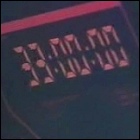 British satellite channel Sky One premieres the first episode of Ronald D. Moore’s re-imagining of Battlestar Galactica, months ahead of the first season premiere in North America on the Sci-Fi Channel. The remainder of the season airs first in the UK due to Sky One’s financial contribution to the production of the series (without which it’s unlikely that Sci-Fi Channel alone would’ve continued production).
British satellite channel Sky One premieres the first episode of Ronald D. Moore’s re-imagining of Battlestar Galactica, months ahead of the first season premiere in North America on the Sci-Fi Channel. The remainder of the season airs first in the UK due to Sky One’s financial contribution to the production of the series (without which it’s unlikely that Sci-Fi Channel alone would’ve continued production).
More about Battlestar Galactica in the LogBook and theLogBook.com Store
Battlestar Galactica now streaming on Amazon Prime
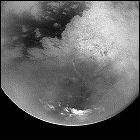 In its first close flyby of Saturn’s largest moon, the unmanned Cassini probe performs the first-ever radar reconaissance of Titan’s surface. Shrouded by a thick, organically-rich atmosphere, Titan’s surface has never been seen until now. Though scientists say that Cassini’s close pass only allows them to map 1% of the surface, the preliminary results prove to be fascinating. Titan seems, at first glance, to have a relatively smooth surface, perhaps indicating oceans, or ongoing glacial or volcanic resurfacing; a member of the radar imaging team says that readings have also indicated that the surface of Titan is “covered in organics.” Cassini will get further chances to aim its radar beams at Titan, and in December it will release the European Space Agency’s Huygens probe, which will approach Titan, ultimately entering the moon’s dense atmosphere in January to take direct readings from the surface, whether it’s solid or liquid.
In its first close flyby of Saturn’s largest moon, the unmanned Cassini probe performs the first-ever radar reconaissance of Titan’s surface. Shrouded by a thick, organically-rich atmosphere, Titan’s surface has never been seen until now. Though scientists say that Cassini’s close pass only allows them to map 1% of the surface, the preliminary results prove to be fascinating. Titan seems, at first glance, to have a relatively smooth surface, perhaps indicating oceans, or ongoing glacial or volcanic resurfacing; a member of the radar imaging team says that readings have also indicated that the surface of Titan is “covered in organics.” Cassini will get further chances to aim its radar beams at Titan, and in December it will release the European Space Agency’s Huygens probe, which will approach Titan, ultimately entering the moon’s dense atmosphere in January to take direct readings from the surface, whether it’s solid or liquid.
 The 18th episode of the radio science fiction comedy series The Hitchhiker’s Guide To The Galaxy is broadcast on BBC Radio, concluding Dirk Maggs’ adaptation of Douglas Adams’ novel Life, The Universe, And Everything with most of the original radio cast. A radio version of the fourth novel, So Long, And Thanks For All The Fish, will follow in 2005.
The 18th episode of the radio science fiction comedy series The Hitchhiker’s Guide To The Galaxy is broadcast on BBC Radio, concluding Dirk Maggs’ adaptation of Douglas Adams’ novel Life, The Universe, And Everything with most of the original radio cast. A radio version of the fourth novel, So Long, And Thanks For All The Fish, will follow in 2005.
More about The Hitchhiker’s Guide To The Galaxy in the LogBook
 Gil Melle, the composer who created the sound of several seminal ’70s supernatural series, dies at the age of 72. He was responsible for the main title music of such shows as Kolchak: The Night Stalker and Rod Serling’s Night Gallery, as well as scores for individual episodes of shows like Kolchak, Columbo and The Six Million Dollar Man. On the big screen, he created the memorably abstract electronic soundtrack for The Andromeda Strain, and he was also consistently employed to write music for TV movies, including Gene Roddenberry’s pilot movie The Questor Tapes.
Gil Melle, the composer who created the sound of several seminal ’70s supernatural series, dies at the age of 72. He was responsible for the main title music of such shows as Kolchak: The Night Stalker and Rod Serling’s Night Gallery, as well as scores for individual episodes of shows like Kolchak, Columbo and The Six Million Dollar Man. On the big screen, he created the memorably abstract electronic soundtrack for The Andromeda Strain, and he was also consistently employed to write music for TV movies, including Gene Roddenberry’s pilot movie The Questor Tapes.
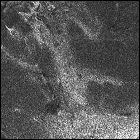 A billion miles from the sun, you don’t need molten lava for volcanoes – you just need subsurface ice to warm up and erupt as water. That’s what NASA scientists think they’ve spotted in a radar image of the surface of Saturn’s moon Titan sent back in late October by the Cassini unmanned probe. A bright, flow-like feature may be indicative of something oozing out onto Titan’s surface from below – and at the frigid temperatures experienced in Saturn’s orbit, ice volcanoes are more likely than the molten rock variety seen on Earth and Mars. If confirmed, this wouldn’t be the first “ice volcano” found in our solar system; Voyager 2 had already spotted an eruption on the surface of Neptune’s largest moon, Triton, as it swung by in August 1989.
A billion miles from the sun, you don’t need molten lava for volcanoes – you just need subsurface ice to warm up and erupt as water. That’s what NASA scientists think they’ve spotted in a radar image of the surface of Saturn’s moon Titan sent back in late October by the Cassini unmanned probe. A bright, flow-like feature may be indicative of something oozing out onto Titan’s surface from below – and at the frigid temperatures experienced in Saturn’s orbit, ice volcanoes are more likely than the molten rock variety seen on Earth and Mars. If confirmed, this wouldn’t be the first “ice volcano” found in our solar system; Voyager 2 had already spotted an eruption on the surface of Neptune’s largest moon, Triton, as it swung by in August 1989.
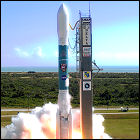 NASA successfully launches the Swift unmanned deep space observatory after a small delay. Carrying three different instrument packages, Swift’s mission is specifically to observe, categorize and study the aftereffects of gamma ray bursts. The satellite is designed to aim itself at any such bursts that it detects within mere seconds so it can catch the short-lived aftereffects and relay its findings to ground controllers. It is believed that some of the bursts are caused by the dying collapse of stars, and possibly the formation of black holes, and as such may be some of the most powerful energy releases known in nature. Swift is expected to observe as many as 100 gamma ray bursts per year.
NASA successfully launches the Swift unmanned deep space observatory after a small delay. Carrying three different instrument packages, Swift’s mission is specifically to observe, categorize and study the aftereffects of gamma ray bursts. The satellite is designed to aim itself at any such bursts that it detects within mere seconds so it can catch the short-lived aftereffects and relay its findings to ground controllers. It is believed that some of the bursts are caused by the dying collapse of stars, and possibly the formation of black holes, and as such may be some of the most powerful energy releases known in nature. Swift is expected to observe as many as 100 gamma ray bursts per year.
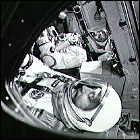 A veteran of the Gemini, Apollo and shuttle programs, 74-year-old astronaut John Young retires from NASA, capping off a 42-year career with the space agency. Young joined NASA in 1962 after hearing President Kennedy’s historic directive to launch a manned mission to the moon, and only three years later Young flew with Mercury veteran Gus Grissom on Gemini 3, the first manned two-person NASA mission. Young commanded Gemini 10 in 1966, was the command module pilot for the moon-orbiting Apollo 10 mission, and in 1972, Young commanded Apollo 16, landing in the moon’s mountainous Descartes region. Young commanded the first space shuttle mission, the maiden flight of Columbia in 1981, and commanded the ninth shuttle flight in 1983. Young had also served as the Chief Astronaut, determining crew assignments and making personnel decisions. In the wake of the Challenger disaster in 1986, Young became one of NASA’s most outspoken critics, and was reassigned to the position of special assistant for engineering, operations and safety – a move he regarded as a political one.
A veteran of the Gemini, Apollo and shuttle programs, 74-year-old astronaut John Young retires from NASA, capping off a 42-year career with the space agency. Young joined NASA in 1962 after hearing President Kennedy’s historic directive to launch a manned mission to the moon, and only three years later Young flew with Mercury veteran Gus Grissom on Gemini 3, the first manned two-person NASA mission. Young commanded Gemini 10 in 1966, was the command module pilot for the moon-orbiting Apollo 10 mission, and in 1972, Young commanded Apollo 16, landing in the moon’s mountainous Descartes region. Young commanded the first space shuttle mission, the maiden flight of Columbia in 1981, and commanded the ninth shuttle flight in 1983. Young had also served as the Chief Astronaut, determining crew assignments and making personnel decisions. In the wake of the Challenger disaster in 1986, Young became one of NASA’s most outspoken critics, and was reassigned to the position of special assistant for engineering, operations and safety – a move he regarded as a political one.
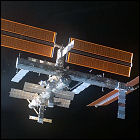 NASA orders the crew of the International Space Station to cut back on meals. Without the Space Shuttle delivering supplies to the station, resupply missions have been flown only by Russia’s much smaller unmanned Progress capsules, but the station was never designed to be restocked by Progress alone. Astronaut Leroy Chiao and cosmonaut Salizhan Sharipov are ordered to cut back on calories – with a reduction in workload to match – until more food arrives on a Progress capsule scheduled for liftoff on Christmas Eve. A failure of that flight could lead to an order to abandon the station.
NASA orders the crew of the International Space Station to cut back on meals. Without the Space Shuttle delivering supplies to the station, resupply missions have been flown only by Russia’s much smaller unmanned Progress capsules, but the station was never designed to be restocked by Progress alone. Astronaut Leroy Chiao and cosmonaut Salizhan Sharipov are ordered to cut back on calories – with a reduction in workload to match – until more food arrives on a Progress capsule scheduled for liftoff on Christmas Eve. A failure of that flight could lead to an order to abandon the station.
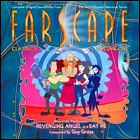 La-La Land Records releases the first soundtrack CD in the Farscape Classics series. The CD contains Guy Gross’ music from the episodes Revenging Angel and Eat Me.
La-La Land Records releases the first soundtrack CD in the Farscape Classics series. The CD contains Guy Gross’ music from the episodes Revenging Angel and Eat Me.